Abstract
Spoilage in skipjack tuna (Katsuwonus pelamis) was studied under controlled conditions by incubating whole, fresh fish in seawater at 38 degrees C, the optimum temperature for histamine formation. Bacterial isolates were obtained from the loin tissue of a decomposing tuna containing 134 mg of histamine per 100 g and a total anaerobic count of 3.5 x 10(5)/g after incubation for 24 h. Over 92% of the 134 isolates obtained were facultatively or obligately anaerobic bacteria. Eighteen isolates produced histamine in culture media containing histidine, and these were identified as Clostridium perfringens, Enterobacter aerogenes, Klebsiella pneumoniae, Proteus mirabilis, and Vibrio alginolyticus. Histidine decarboxylase activity of several isolates was measured in a tuna broth medium and with resting cells suspended in a buffered histidine solution.
Full text
PDF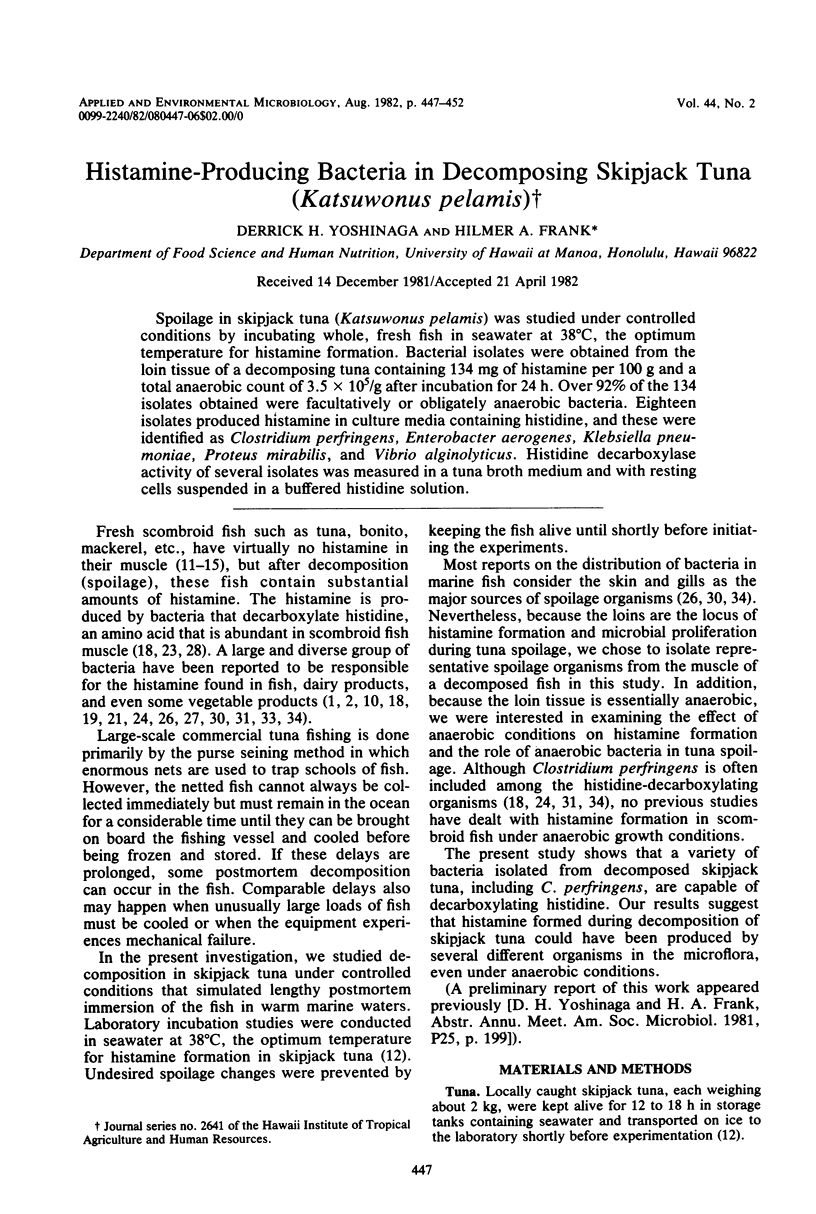
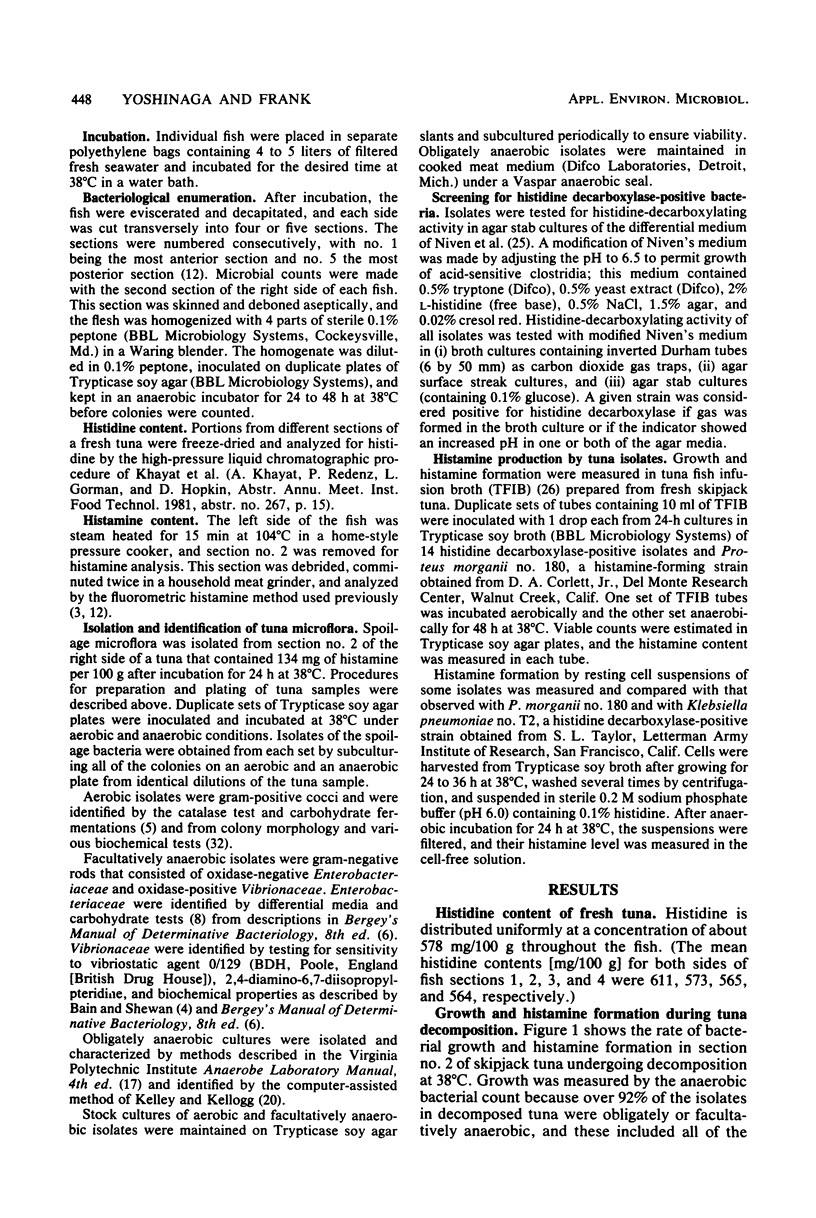
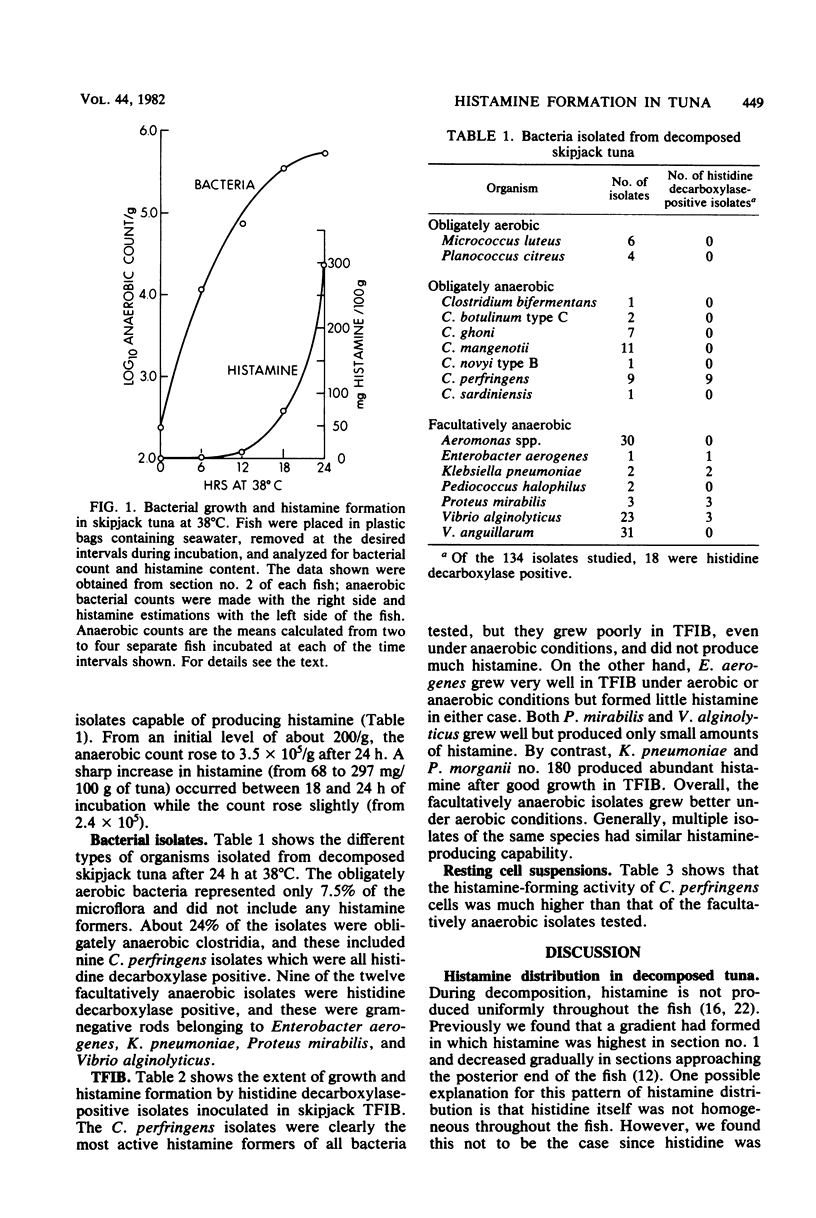
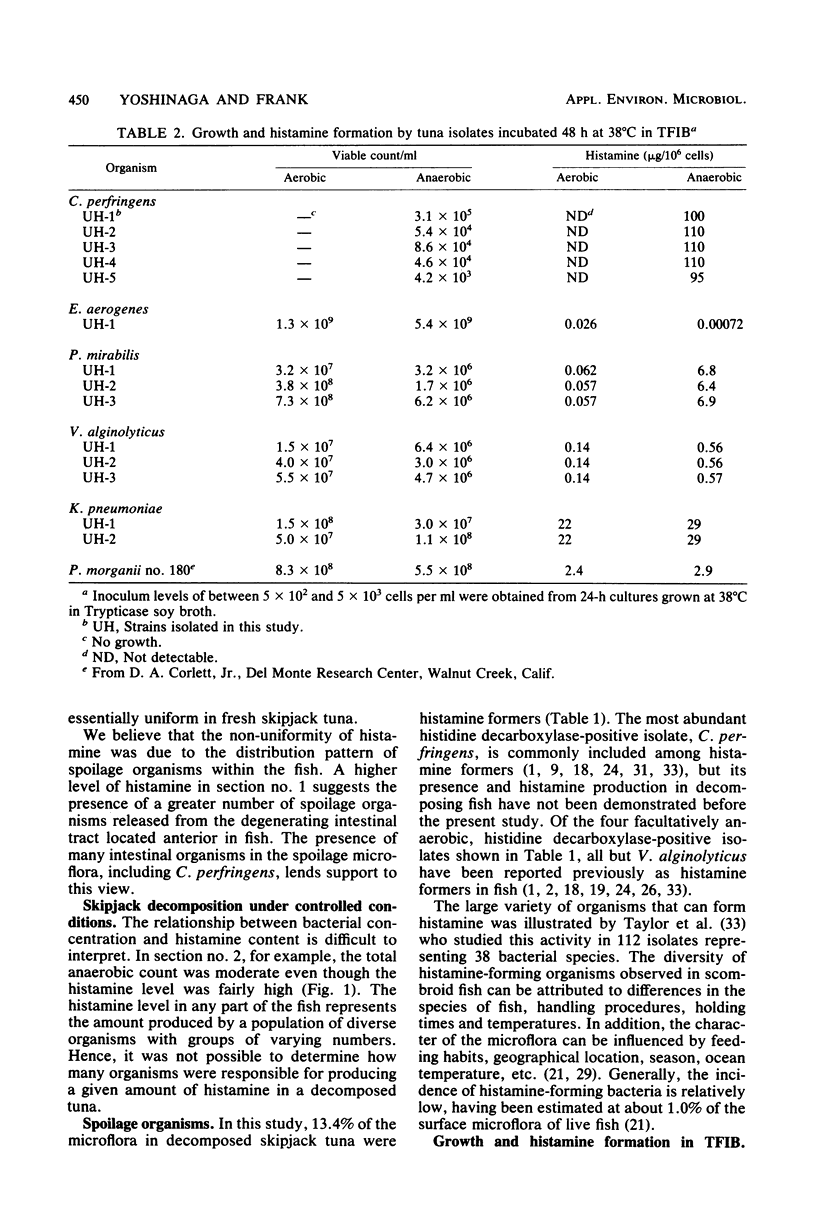
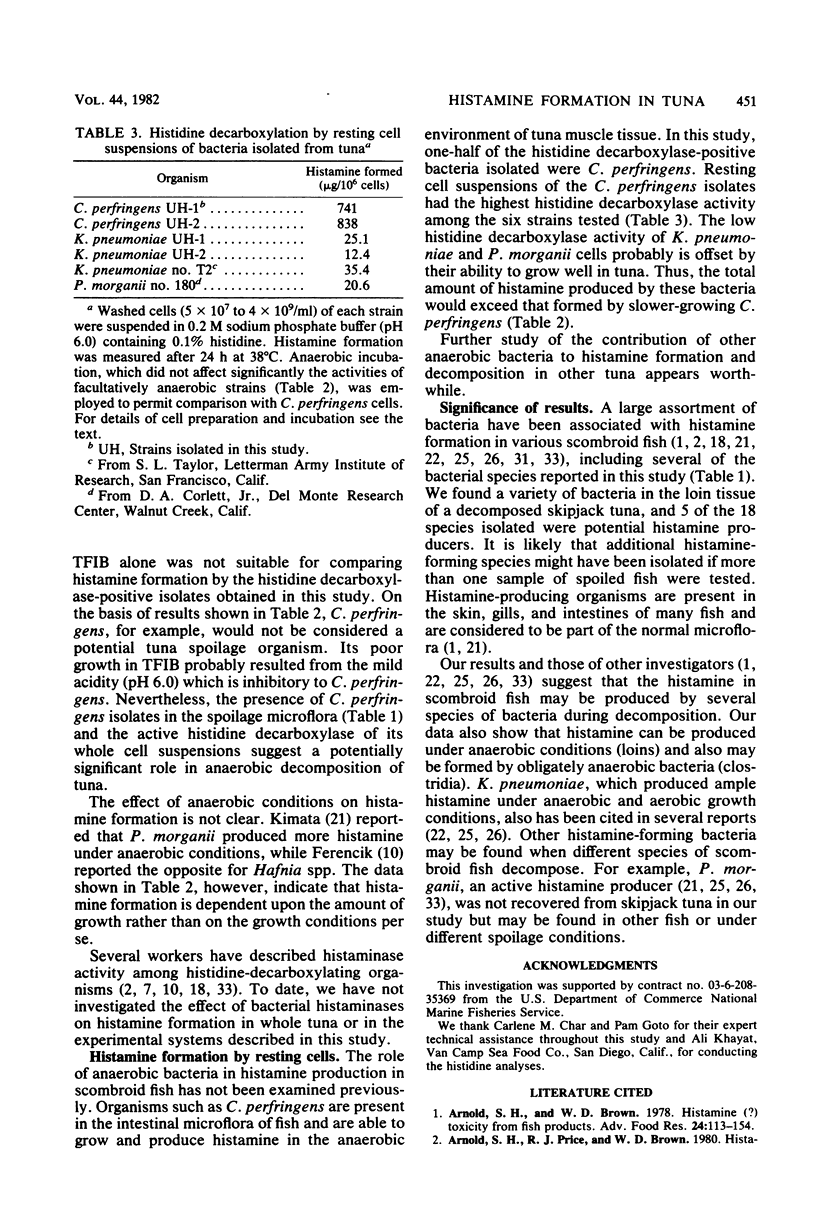
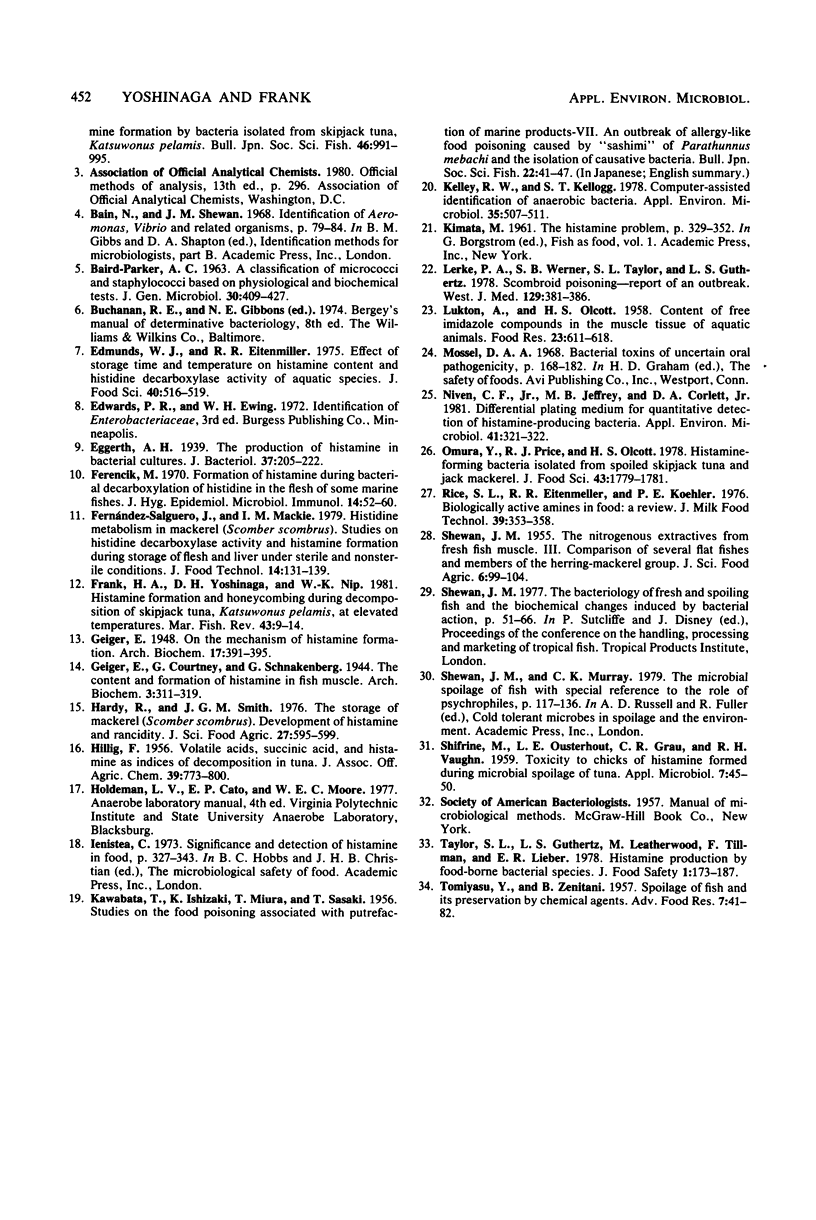
Selected References
These references are in PubMed. This may not be the complete list of references from this article.
- Arnold S. H., Brown W. D. Histamine (?) toxicity from fish products. Adv Food Res. 1978;24:113–154. doi: 10.1016/s0065-2628(08)60157-3. [DOI] [PubMed] [Google Scholar]
- BAIRD-PARKER A. C. A classification of micrococci and staphylococci based on physiological and biochemical tests. J Gen Microbiol. 1963 Mar;30:409–427. doi: 10.1099/00221287-30-3-409. [DOI] [PubMed] [Google Scholar]
- Eggerth A. H. The Production of Histamine in Bacterial Cultures. J Bacteriol. 1939 Feb;37(2):205–222. doi: 10.1128/jb.37.2.205-222.1939. [DOI] [PMC free article] [PubMed] [Google Scholar]
- Ferencík M. Formation of histamine during bacterial decarboxylation of histidine in the flesh of some marine fishes. J Hyg Epidemiol Microbiol Immunol. 1970;14(1):52–60. [PubMed] [Google Scholar]
- Hardy R., Smith J. G. The storage of mackerel (Scomber scombrus). Development of histamine and rancidity. J Sci Food Agric. 1976 Jul;27(7):595–599. doi: 10.1002/jsfa.2740270702. [DOI] [PubMed] [Google Scholar]
- Kelley R. W., Kellogg S. T. Computer-assisted identification of anaerobic bacteria. Appl Environ Microbiol. 1978 Mar;35(3):507–511. doi: 10.1128/aem.35.3.507-511.1978. [DOI] [PMC free article] [PubMed] [Google Scholar]
- Lerke P. A., Werner S. B., Taylor S. L., Guthertz L. S. Scombroid poisoning. Report of an outbreak. West J Med. 1978 Nov;129(5):381–386. [PMC free article] [PubMed] [Google Scholar]
- Niven C. F., Jr, Jeffrey M. B., Corlett D. A., Jr Differential plating medium for quantitative detection of histamine-producing bacteria. Appl Environ Microbiol. 1981 Jan;41(1):321–322. doi: 10.1128/aem.41.1.321-322.1981. [DOI] [PMC free article] [PubMed] [Google Scholar]
- SHIFRINE M., OUSTERHOUT L. E., GRAU C. R., VAUGHN R. H. Toxicity to chicks of histamine formed during microbial spoilage of tuna. Appl Microbiol. 1959 Jan;7(1):45–50. doi: 10.1128/am.7.1.45-50.1959. [DOI] [PMC free article] [PubMed] [Google Scholar]


